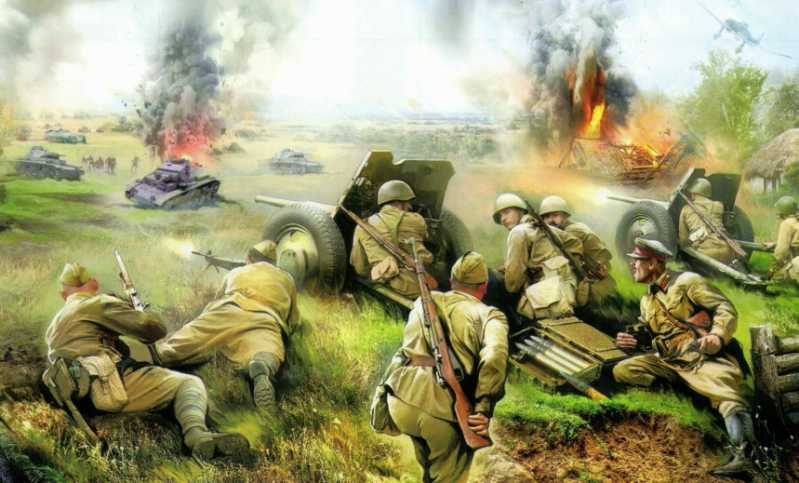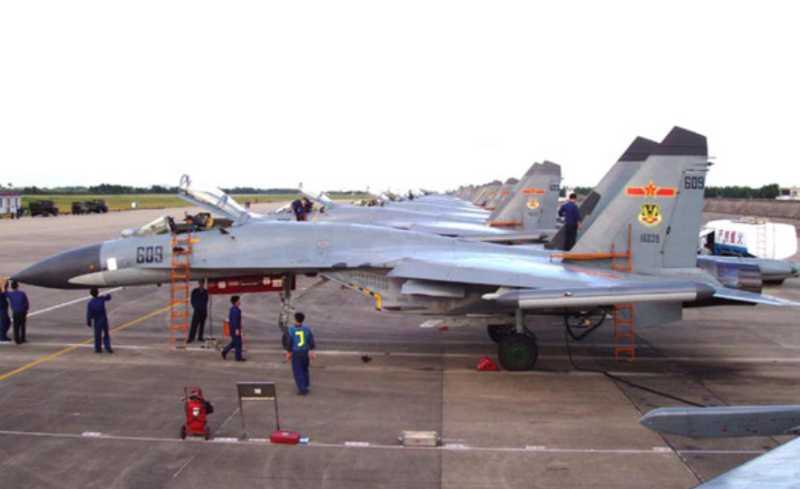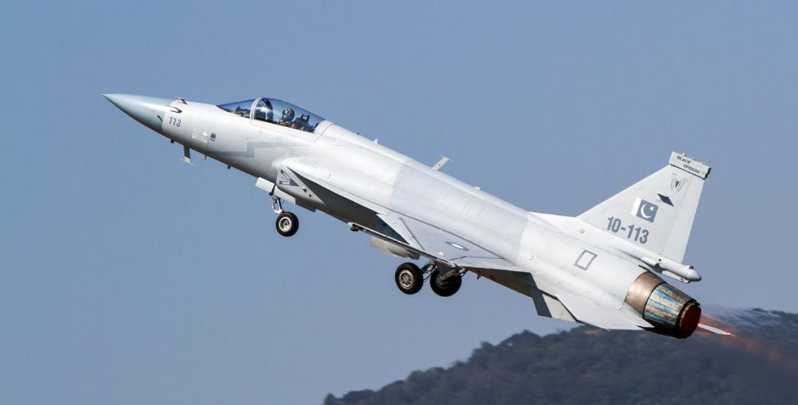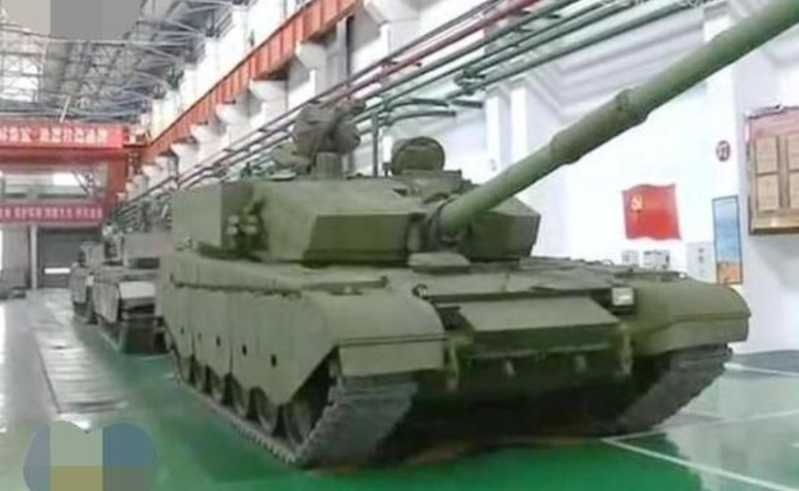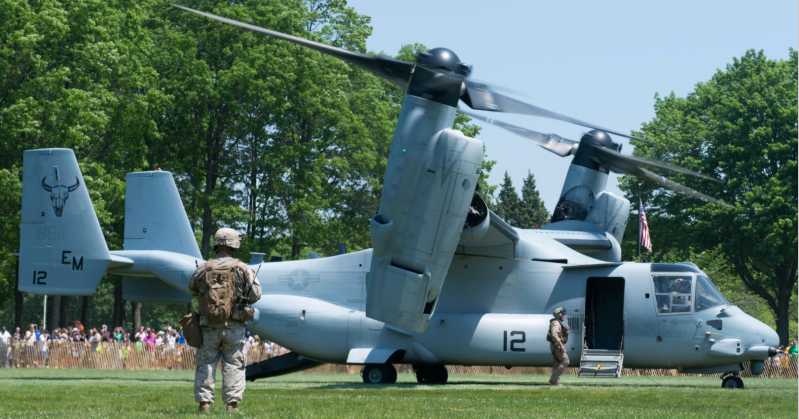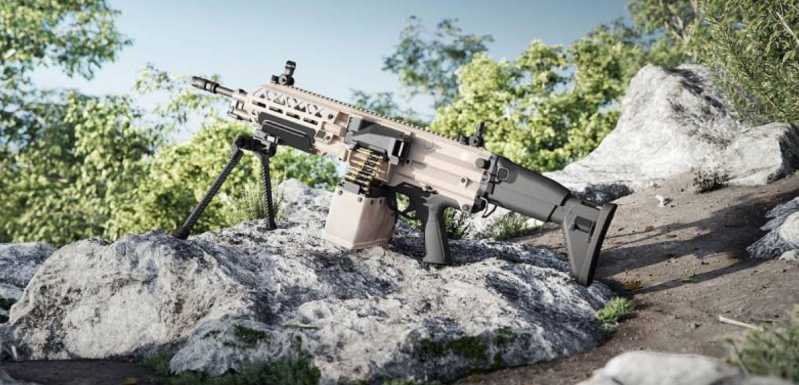June 22, 1941, was an unforgettable day for the former Soviet army. On this day, the German army suddenly launched a large-scale blitzkrieg offensive, and the Soviet army suffered a "black day" that was too painful to look back on.
At the beginning of the war, the German Air Force attacked 66 Soviet front-line airports, and successfully destroyed 1,811 fighter planes with only 35 fighter planes lost. The connection between the Soviet front-line troops and the rear was completely cut off by the German army. Whether it was the bunkers, fortifications, trenches in the front or the command of the Soviet ground forces in the rear, they all became targets of German bombing. The Soviet mechanized troops could only fight hastily in chaos. In the following short 6 days, the German army successively occupied Riga, Minsk and Lviv. The Central Army Group, composed of the 9th and 4th Field Army Groups, the 2nd and 3rd Tank Groups, commanded by Marshal von Bock, drove straight into the Soviet Union in the direction of Brest with the support of the 2nd Air Force, reaching a depth of 320 kilometers. Later, Soviet General Fezhuninsky recalled painfully: "Our railways, roads and transportation hubs were destroyed by the German Air Force. Our military headquarters lacked radio communication equipment, and no one knew how to use them... Orders and instructions from superiors were always late, and sometimes they could not arrive at all. 33
The first part of the classic World War II movie "The Battle of Moscow" "Invasion" tells the story of the bloody battle between the Soviet army and the German army in the early days of the war. So the question is, why did the Soviet army suffer heavy losses in the German attack despite receiving intelligence in advance? This article analyzes the deep reasons behind the Soviet army’s defeat by comparing movies with historical materials.
Intelligence misjudgment leads to misunderstandings
"Some secret organizations sent different events about the German attack on the Soviet Union, which disrupted the Red Army Intelligence Bureau This is a scene in the movie "Battle of Moscow" where the director of the Soviet Intelligence Bureau did not report the intelligence sent by Sorge about the German attack on the Soviet Union in time, but shelved it.
In fact, since the beginning of March 1941, the Soviet army has received military intelligence from different organizations and countries about the German army’s preparation to attack the Soviet Union.
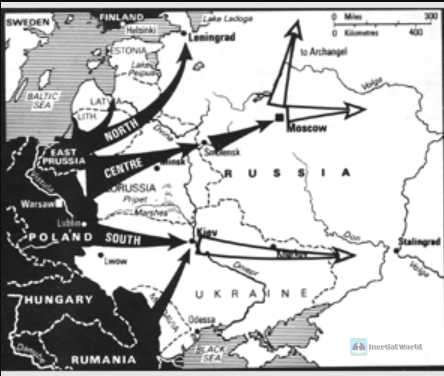
In early January 1941, the US Commercial Counselor in Berlin learned of Germany’s true intentions towards the Soviet Union. More than a month later, the United States provided this intelligence to the Soviet ambassador in Washington and reminded the Soviet side: "In the spring and summer of 1941, the possible invasion of the Soviet Union by Germany has become a topic of discussion among diplomatic officials stationed in Moscow. ”
In late April, at a party held by the US Embassy in Germany, a German Air Force officer told a secretary of the Soviet Embassy in person: "The main forces of the German Air Force and Army have been transferred to the Eastern Front." A German major also revealed to the Soviet military attaché in Berlin: "Germany intends to march into the Soviet Union."
On May 15, Soviet ace spy Richard Sorge sent a telegram in Tokyo, Japan: "The German army will launch a surprise attack on the Soviet Union around June 20."
At the end of May, Bondarev, director of the Intelligence Department of the Kiev Military District, reported: "The German army’s new tanks are constantly heading to important areas on the Soviet border, and military preparations against the Soviet Union have become more intense recently.
In early June, the US ambassador to the Soviet Union personally handed a document to Soviet Foreign Minister Molotov, warning that Germany would attack the Soviet Union within two weeks. Just this month, the Eighth Route Army infiltrated the German Embassy in China and accidentally intercepted secret intelligence that Germany would attack the Soviet Union. The Eighth Route Army headquarters promptly telegraphed Stalin: Germany will attack the Soviet Union in late June.
However, Stalin, who had received a lot of intelligence about the secret gathering of the German army since the spring of 1941, did not pay enough attention to it. He firmly believed that Germany would not rashly launch another war on the Eastern Front without settling Britain on the Western Front. Because fighting on two fronts is not the behavior of normal people, it is an action that only crazy people would take.
In fact, as early as March 20, Golikov, the head of the Intelligence Department of the Soviet General Staff, submitted an intelligence analysis report, listing a large number of facts to show that Germany’s military activities in the border area were becoming more and more frequent. More than a month later, Golikov received intelligence that the German army had assembled more than 100 divisions on the Soviet border and reported it to Stalin in a timely manner.
However, it is somewhat incredible that Golikov regarded the intelligence and signs of the approaching German-Soviet war as a trap played by the British or German intelligence departments.
He further concluded that "Germany will not attack the Soviet Union before the German army conquers Britain or negotiates peace with it."
It was this wrong conclusion that deepened Stalin’s illusion, mistakenly believing that Germany did not dare to take the risk of fighting on two fronts and would not attack the Soviet Union before ending the war against Britain.
Preparing for war in the wrong direction
Faced with the increasingly tense situation on the German-Soviet border, the Soviet army was actually not indifferent, but
took some preventive measures. Given that the Soviet army paid a heavy price in the Soviet-Finnish War in 1939. In order to sum up the lessons, improve the Soviet equipment and improve the Soviet tactical level, Marshal Timoshenko carried out drastic reorganization and refitting in 1940, and the expansion of the Soviet mechanized forces was soon put on the agenda.
The Soviet army at that time was mainly composed of: land, sea, air force, national air defense forces and reserve forces. The army with the largest number of troops is divided into infantry, tanks, mechanized forces, artillery, cavalry, air assault forces, and logistics units of railways, highways, engineering, chemistry, and guard radio communications.
At the beginning of the war, the Soviet Army had 303 divisions, except for 88 divisions that were still being formed, there were 178 infantry divisions and 18 mountain infantry divisions. Timoshenko planned to use 2 independent motorized infantry divisions and 31 motorized infantry divisions to form the Soviet mechanized forces.

At the same time, the Soviet army continued to increase military spending for the research and development of military equipment. According to records, the Soviet defense budget only accounted for an average of 12.7% of the entire national budget from 1933 to 1937, and increased to 26.4% from 1938 to 1940. The plan for 1941 was increased to 43.3%. In the summer of 1941, the annual production capacity of Soviet military aircraft had exceeded that of Germany by 50% during the same period.
In the development of tanks, the Soviet Union’s achievements were even more impressive. The new medium tank T-34 and heavy tank KV developed from 1939 to 1940 both had powerful firepower and heavy armor. Not only did their technical parameters far exceed the Type 3 tank equipped by the German army, but they were also not inferior to the Type 4 tank developed by the German army during the same period and the later "Tiger" tank.
A few months before the outbreak of the war, the Soviet army had prepared for the rainy day and specially recruited a large number of reservists to serve and expand the strength of the army. According to the figures published later, before the war, the total strength of the Soviet army increased to 4.2 million. In order to enrich the backbone of the army, a large number of grassroots officers who were arrested and imprisoned during the purge were released from prison. In addition to restoring the reputation of many of them and returning to the army, they began to plan to reserve important strategic materials in the rear.
Objectively speaking, the above series of measures laid a certain material foundation for the subsequent anti-aggression war. However, in retrospect, the Soviet army’s preparations for war at that time still had many shortcomings. First, the troops were deployed forward, but they were not prepared for war.
In March and April 1941, the Soviet army transferred troops from the inland areas and transferred 4 army groups, a total of 28 divisions, to the western region. By early June 1941, the Soviet army had increased its strength to 149 divisions on the German-Soviet border. Among them, Kirponos, commander of the Kiev Military District, also transferred some of his troops to the Soviet-German border area. However, Kirponos unexpectedly publicly stated on 29
stated: "This is passive defense and a waste of manpower. I feel sad and embarrassed about this. The Soviet army’s unusual behavior naturally attracted the attention of the German army. The German Chief of Staff Halder actually gave a ridiculous opinion: "The Soviet army’s deployment may mean preparation for a preventive large-scale offensive, but taking such emergency actions is militarily impossible." And Kinzel, an outstanding Eastern Front intelligence officer under Halder, pointed out: "The large-scale assembly of the Soviet army is just a scare move, and there is no need to pay attention to it. It must be said that the view of this German intelligence officer was correct and was soon verified.

With only one week left before the outbreak of the war, the worried new Defense Minister Marshal Timoshenko, after receiving a report from the General Staff Intelligence Department Chief Golikov about the increasing number of German troops gathering in the German-Soviet border area, immediately reported to Stalin and proposed that the Soviet troops that had assembled on the Soviet-German border should immediately prepare for battle. However, Stalin not only expressed his opposition, but also warned Timoshenko: "Don’t believe these enemy reports."
In Stalin’s view, the various signs that the German army was preparing to launch a war were not a precursor to military invasion, but part of a spiritual war. The real intention was that the Germans had new demands on the Soviet Union in terms of politics and territory.
Second, the Soviet army’s tanks and aircraft equipment could not keep up with the progress before the war.
In the spring of 1941, Timoshenko, then the Minister of Defense of the Soviet Union, decided to form 20 mechanized armies. However, due to the short time, the production of weapons and equipment could not keep up with the process of the army’s reorganization.
Take the Soviet tank troops as an example. Until the war, they had not completed all the replacement work, and only produced 639 KB medium tanks and 1,225 famous T-34 medium tanks. At that time, the main tanks used by the Soviet army were still the T-26 and T-28, which had long exposed serious defects in the Soviet-Finnish War, and the BT series tanks whose performance was inferior to that of the German army. What’s worse, before the outbreak of the war, the proportion of Soviet tanks and mechanized troops was only equivalent to 10% of the total force.
In terms of the air force, the Soviet army’s new fighters MiG-3, Yak series, and La series progressed slowly, resulting in too late time for mass production, resulting in a small number of new fighters equipped by the Soviet army, far from being able to compete with German fighters.
Third, the Soviet army was short of manpower and equipment before the war.
It is well known that the Soviet army had 14,483 people in each division during the war, but before the German invasion, many Soviet divisions were not fully equipped and had only 7,000 to 8,000 people. What’s more terrible is that among these troops, the proportion of Soviet soldiers who lacked training was quite large, and more than 25% of the soldiers only served for about eight months. What is surprising is that before the war, many Soviet troops were relatively short of weapons and equipment, and several soldiers shared a gun. Many heavy weapons and ammunition reserves were seriously insufficient.
Fourth, the Soviet troops lacked training related to defensive operations
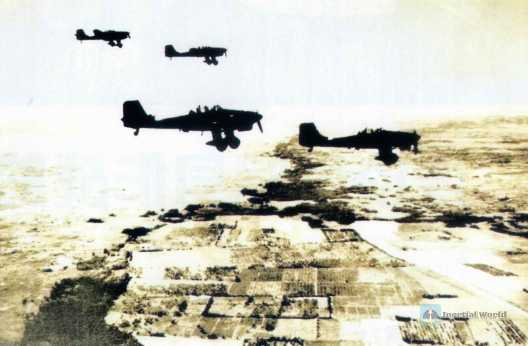
In the last days before the start of the war, Stalin finally revised his previous judgment, but still unilaterally believed that the war might start after the spring of 1942. Surprisingly, Stalin determined that the war mode would start with the Soviet Union’s initiative to attack Germany, and the war would be fought on foreign soil.
Therefore, most of the military exercises and combat plans conducted by the Soviet army were conducted outside the country. As for how the border areas could resist the large-scale offensive that the German army might launch on the front, there was almost no mental preparation.
It is regrettable that this new judgment on the future direction of the German-Soviet war was later proved to be wrong. The film "Battle of Moscow" cleverly highlights this point through a conversation between the Soviet political commissar and the regiment commander who defended the Brest Fortress in the last two days before the war.
"Are your fortifications not completed yet?" "My two battalions in that regiment are reinforcing and building fortifications every day, but you know, comrade Political Commissar, those fortifications are not completed at all. Up to now, no cannons have been installed at any firing point, and no one is in a hurry. More
"The reason why the military leaders are not in a hurry to build fortified areas is that these fortifications are not needed at all. Our military principle is not defense but offense. If the enemy brings the war to us, our army will be the most offensive force among all armies, and can deal a devastating blow to the enemy and make them perish on the spot. ”
Until late at night on June 21, facing the fact that the war was about to break out, Stalin finally agreed to issue a reserve order at midnight, ordering the Soviet Border Military District to immediately enter a state of combat readiness and appointing Marshal Budyonny as the commander of the reserve army. However, this remedial measure was too late, and many Soviet troops were attacked by the German army without receiving any orders. The five-star general of the United States, MacArthur, once said: "Preparation is the key to success and victory!" In terms of preparations, the Soviet army obviously went in the wrong direction. It was the mistakes made by the Soviet high-level officials in intelligence judgment and preparation methods that provided the German army with an opportunity to invade the Soviet Union, resulting in heavy losses to the Soviet army in the early stages of the war.
was attacked by the German army without receiving any orders. American five-star general MacArthur once said: "Preparation is the key to success and victory!" In terms of preparation, the Soviet army obviously went in the wrong direction. It was the mistakes made by the Soviet high-level officials in intelligence judgment and preparation methods that provided the German army with an opportunity to invade the Soviet Union, resulting in heavy losses to the Soviet army in the early stages of the war.


